-
 Bitcoin
Bitcoin $83,396.9124
1.75% -
 Ethereum
Ethereum $1,856.1452
3.22% -
 Tether USDt
Tether USDt $0.9999
0.00% -
 XRP
XRP $2.0931
1.41% -
 BNB
BNB $608.8693
1.85% -
 Solana
Solana $126.2262
0.26% -
 USDC
USDC $1.0000
0.00% -
 Dogecoin
Dogecoin $0.1699
3.85% -
 Cardano
Cardano $0.6717
3.74% -
 TRON
TRON $0.2344
0.68% -
 Toncoin
Toncoin $4.0914
5.05% -
 Chainlink
Chainlink $13.7560
4.00% -
 UNUS SED LEO
UNUS SED LEO $9.1476
0.44% -
 Stellar
Stellar $0.2667
2.02% -
 Avalanche
Avalanche $19.3419
4.00% -
 Shiba Inu
Shiba Inu $0.0...01272
5.04% -
 Sui
Sui $2.3130
2.26% -
 Hedera
Hedera $0.1657
3.46% -
 Polkadot
Polkadot $4.1520
3.63% -
 Litecoin
Litecoin $84.3944
0.49% -
 MANTRA
MANTRA $6.3108
1.72% -
 Bitcoin Cash
Bitcoin Cash $309.1161
4.67% -
 Bitget Token
Bitget Token $4.6093
2.42% -
 Dai
Dai $0.9999
0.00% -
 Ethena USDe
Ethena USDe $0.9998
-0.07% -
 Pi
Pi $0.7165
1.22% -
 Hyperliquid
Hyperliquid $13.3865
6.57% -
 Monero
Monero $217.4508
0.26% -
 Uniswap
Uniswap $6.1102
2.97% -
 Aptos
Aptos $5.3073
2.58%
How to build GPU mining equipment using second-hand hardware
Building a cost-effective GPU mining rig with second-hand components requires careful selection of reliable GPUs like AMD Radeon RX 570, a compatible motherboard, and a high-wattage PSU.
Mar 30, 2025 at 11:21 am
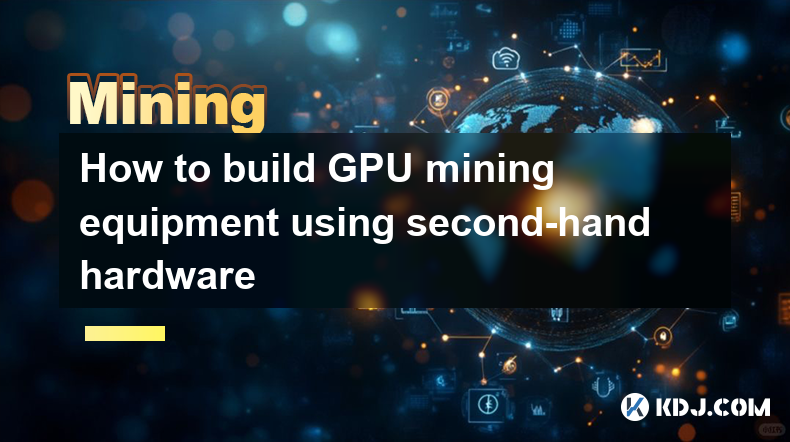
Sourcing Second-Hand Components: The Foundation of Your Mining Rig
Building a GPU mining rig with second-hand hardware can be a cost-effective way to enter the cryptocurrency mining world. However, it requires careful planning and selection to ensure profitability and stability. The key is to find reliable used components at competitive prices. This often involves scouring online marketplaces like eBay, local classifieds, and dedicated hardware resale forums. Remember to always verify the seller's reputation before committing to a purchase.
Selecting Suitable GPUs: The Heart of Your Operation
The most crucial component for any mining rig is the Graphics Processing Unit (GPU). For second-hand purchases, prioritize cards known for their good mining performance and relatively low power consumption. AMD Radeon RX 570, RX 580, and RX 470 are frequently mentioned as good options due to their price-to-performance ratio in the used market. However, always check the card's condition thoroughly – look for signs of overheating or damage. Consider the age of the card as well, as older cards might have reduced hashrates compared to their newer counterparts.
Choosing a Motherboard: The Connecting Force
The motherboard serves as the central hub connecting all your components. When selecting a used motherboard, ensure it has enough PCIe slots to accommodate all your GPUs. Motherboards with at least six PCIe x16 slots are generally recommended for larger mining rigs. Pay close attention to the chipset and its compatibility with your chosen GPUs. A compatible chipset is vital for stable operation and prevents potential issues with driver installation. Always check the manufacturer's specifications to ensure compatibility.
Power Supply Unit (PSU): The Energy Source
The PSU is responsible for providing power to all your components. Underestimating the power requirements of your mining rig can lead to instability and damage. A high-wattage PSU is essential, ideally with sufficient headroom to avoid overloading. Calculate the power draw of each component and add a safety margin of at least 20%. Second-hand PSUs should be thoroughly tested before use to avoid potential failures that could damage other components. Look for reputable brands with a good track record of reliability.
CPU and RAM: The Supporting Cast
While the GPUs do the heavy lifting in mining, the CPU and RAM still play a supporting role. For mining, you don't need a high-end CPU. A budget-friendly CPU with sufficient processing power to run the mining software will suffice. Similarly, you don't need a large amount of RAM. 8GB of RAM is typically enough for most mining operations. Focus on choosing reliable used components rather than high-spec ones, as they won't significantly impact mining performance.
Case Selection: Housing Your Rig
The case should be large enough to accommodate all your components and provide adequate airflow for cooling. A spacious case with good ventilation is crucial to prevent overheating, especially with multiple GPUs. Consider a server rack case for larger mining rigs, as these are designed for efficient cooling and easy maintenance. Ensure there's enough space for cable management to prevent clutter and improve airflow.
Assembling Your Mining Rig: A Step-by-Step Guide
- Prepare your workspace: Ensure a clean, well-lit, and static-free environment. Use an anti-static wrist strap to prevent damage to sensitive components.
- Install the CPU and RAM: Refer to your motherboard's manual for the correct installation procedure.
- Mount the GPUs: Carefully install the GPUs into the available PCIe slots.
- Connect the PSU: Securely connect the PSU to the motherboard and all components.
- Install the operating system: Use a mining-optimized operating system like HiveOS or SimpleMining OS.
- Install mining software: Choose a mining pool and configure the software accordingly.
- Test and monitor: Run a test mining session and monitor temperatures and hashrates.
Cooling Considerations: Maintaining Optimal Temperatures
GPU temperatures are critical for maintaining mining rig stability and longevity. Adequate cooling is essential to prevent overheating and potential damage. Consider using additional case fans, GPU coolers, and possibly even a liquid cooling system for larger rigs. Monitor temperatures closely during operation, and adjust cooling as needed. High temperatures can significantly reduce hashrate and lifespan.
Power Consumption and Efficiency: Managing Costs
Mining can be energy-intensive. Monitoring power consumption is crucial for managing costs and ensuring profitability. Use a power meter to track energy usage. Consider using energy-efficient components and optimizing your mining software to reduce power consumption. Compare the electricity costs against the potential mining profits to ensure your operation remains financially viable.
Frequently Asked Questions
Q: What are the risks of using second-hand hardware for mining?
A: Risks include malfunctioning components, reduced lifespan, and potential incompatibility issues. Thorough testing and careful selection are crucial to mitigate these risks.
Q: How can I ensure the second-hand components are reliable?
A: Check seller reviews, request detailed photos and videos, and consider purchasing from reputable sellers or established businesses. Testing components before integrating them into your rig is also crucial.
Q: What operating systems are best suited for mining with second-hand hardware?
A: HiveOS and SimpleMining OS are popular choices known for their ease of use and mining optimization features. They are generally compatible with a wide range of hardware.
Q: How can I optimize my second-hand mining rig for maximum efficiency?
A: Optimize overclocking settings (carefully!), use efficient cooling solutions, and select a profitable cryptocurrency to mine. Regular maintenance and monitoring are also key.
Q: Are there any specific GPUs I should avoid when buying second-hand?
A: Avoid GPUs with known issues like high failure rates or poor mining performance. Research thoroughly before purchasing any specific model. Always prioritize reputable brands with proven track records.
Q: What's the best way to find second-hand mining GPUs?
A: Online marketplaces like eBay, Facebook Marketplace, and specialized hardware resale forums are good starting points. Local computer repair shops might also have used GPUs available.
Q: How do I calculate the power consumption of my mining rig?
A: Check the power specifications of each component (GPU, motherboard, CPU, etc.). Add them up, and add a safety margin of at least 20% to account for inefficiencies. Use a power meter to verify actual consumption.
Disclaimer:info@kdj.com
The information provided is not trading advice. kdj.com does not assume any responsibility for any investments made based on the information provided in this article. Cryptocurrencies are highly volatile and it is highly recommended that you invest with caution after thorough research!
If you believe that the content used on this website infringes your copyright, please contact us immediately (info@kdj.com) and we will delete it promptly.
- Bitcoin (BTC) Recovers to Around $83,000, a 1.4% Increase Over the Past 24 Hours.
- 2025-04-01 15:10:12
- Ethereum (ETH) Struggles as ETF Outflows Hit $409M; Whale Deposits 6,131 ETH Amid Market Panic. Is a Deeper Selloff Ahead?
- 2025-04-01 15:10:12
- Gutter Cat Gang (GCG) GANG Token Launch on Apechain Runs into Technical Issues
- 2025-04-01 15:05:12
- Ethereum (ETH) Navigates Turbulent Waters as Whales Sell and Liquidations Loom
- 2025-04-01 15:05:12
- Solana (SOL) Price Faces Bearish Pressure: Technical Analysis and Consolidation Pattern
- 2025-04-01 15:00:12
- Cryptocurrency Market Caps Double-Digit Losses to End Q1 on a Sour Note
- 2025-04-01 15:00:12
Related knowledge
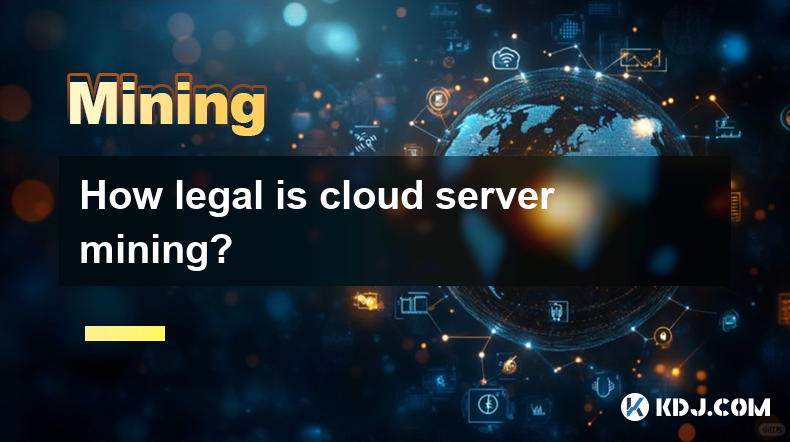
How legal is cloud server mining?
Apr 01,2025 at 08:08am
Cloud server mining has become an increasingly popular method for individuals and companies to participate in cryptocurrency mining without the need for expensive hardware and high electricity costs. However, the legality of cloud server mining can be a complex issue, as it varies by jurisdiction and depends on several factors. This article will explore...
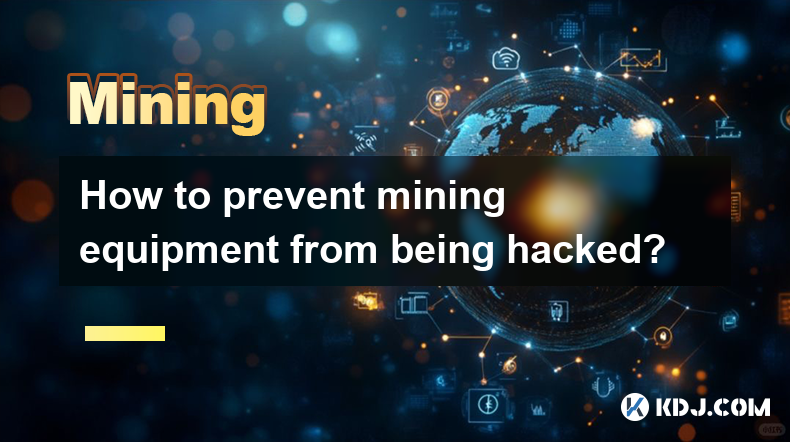
How to prevent mining equipment from being hacked?
Apr 01,2025 at 06:22am
Understanding the ThreatsCryptocurrency mining, while potentially lucrative, exposes your equipment to various cyber threats. These threats range from simple malware infections that steal your mining profits to sophisticated attacks that hijack your entire operation. Understanding these threats is the first step in effective protection. This includes r...
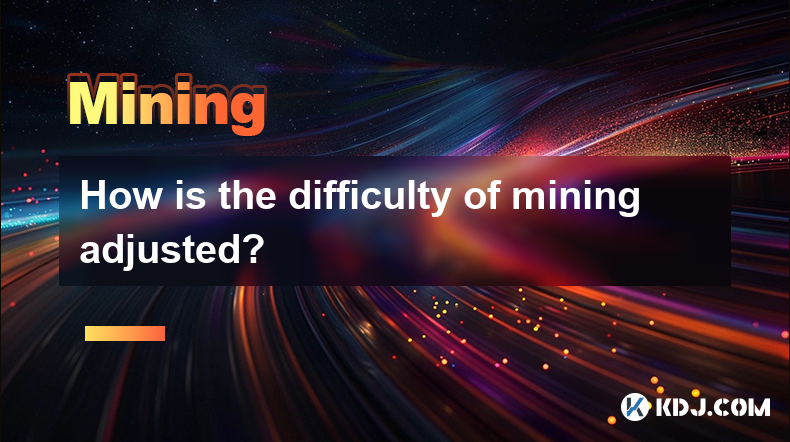
How is the difficulty of mining adjusted?
Apr 01,2025 at 07:14am
Understanding Bitcoin's Difficulty Adjustment MechanismBitcoin's mining difficulty is a crucial element ensuring the network's stability and security. It dynamically adjusts to maintain a consistent block generation time, approximately every 10 minutes. This adjustment prevents miners with overwhelming computing power from monopolizing block creation a...
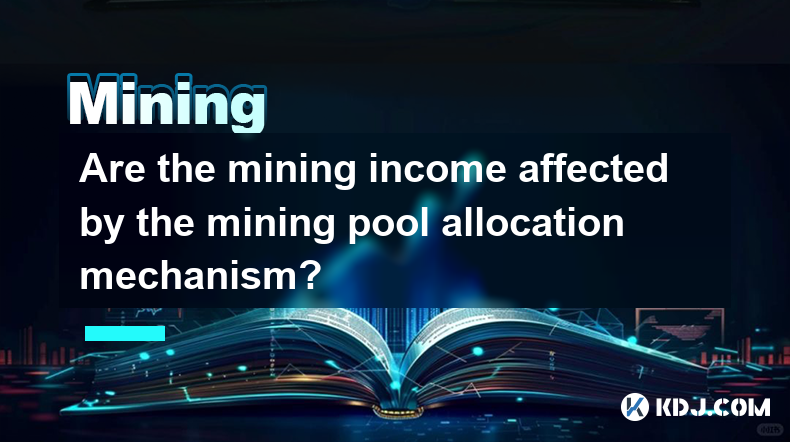
Are the mining income affected by the mining pool allocation mechanism?
Mar 31,2025 at 05:49pm
Understanding Mining Pool Allocation MechanismsMining pools aggregate the hashing power of many miners to increase the chances of successfully mining a block. The reward for successfully mining a block is then distributed among the pool's participants based on their contribution – usually measured in shares submitted. The allocation mechanism determine...

How does mining difficulty affect the profit?
Apr 01,2025 at 12:00pm
Understanding Mining Difficulty and its Impact on ProfitabilityMining difficulty in the context of cryptocurrencies refers to how computationally hard it is to solve the cryptographic puzzle required to add a new block to the blockchain. This difficulty is automatically adjusted by the network to maintain a consistent block time, typically around 10 mi...
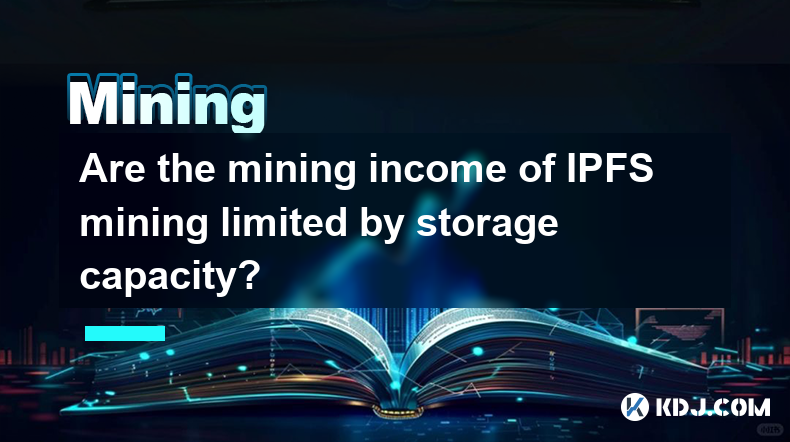
Are the mining income of IPFS mining limited by storage capacity?
Apr 01,2025 at 12:00am
Understanding IPFS Mining and its Revenue ModelIPFS (InterPlanetary File System) mining, unlike Bitcoin mining which relies on computational power, focuses on providing storage and bandwidth to the network. Miners earn rewards by making their storage available and contributing to the overall health and efficiency of the decentralized network. The amoun...

How legal is cloud server mining?
Apr 01,2025 at 08:08am
Cloud server mining has become an increasingly popular method for individuals and companies to participate in cryptocurrency mining without the need for expensive hardware and high electricity costs. However, the legality of cloud server mining can be a complex issue, as it varies by jurisdiction and depends on several factors. This article will explore...

How to prevent mining equipment from being hacked?
Apr 01,2025 at 06:22am
Understanding the ThreatsCryptocurrency mining, while potentially lucrative, exposes your equipment to various cyber threats. These threats range from simple malware infections that steal your mining profits to sophisticated attacks that hijack your entire operation. Understanding these threats is the first step in effective protection. This includes r...

How is the difficulty of mining adjusted?
Apr 01,2025 at 07:14am
Understanding Bitcoin's Difficulty Adjustment MechanismBitcoin's mining difficulty is a crucial element ensuring the network's stability and security. It dynamically adjusts to maintain a consistent block generation time, approximately every 10 minutes. This adjustment prevents miners with overwhelming computing power from monopolizing block creation a...

Are the mining income affected by the mining pool allocation mechanism?
Mar 31,2025 at 05:49pm
Understanding Mining Pool Allocation MechanismsMining pools aggregate the hashing power of many miners to increase the chances of successfully mining a block. The reward for successfully mining a block is then distributed among the pool's participants based on their contribution – usually measured in shares submitted. The allocation mechanism determine...

How does mining difficulty affect the profit?
Apr 01,2025 at 12:00pm
Understanding Mining Difficulty and its Impact on ProfitabilityMining difficulty in the context of cryptocurrencies refers to how computationally hard it is to solve the cryptographic puzzle required to add a new block to the blockchain. This difficulty is automatically adjusted by the network to maintain a consistent block time, typically around 10 mi...

Are the mining income of IPFS mining limited by storage capacity?
Apr 01,2025 at 12:00am
Understanding IPFS Mining and its Revenue ModelIPFS (InterPlanetary File System) mining, unlike Bitcoin mining which relies on computational power, focuses on providing storage and bandwidth to the network. Miners earn rewards by making their storage available and contributing to the overall health and efficiency of the decentralized network. The amoun...
See all articles























































































